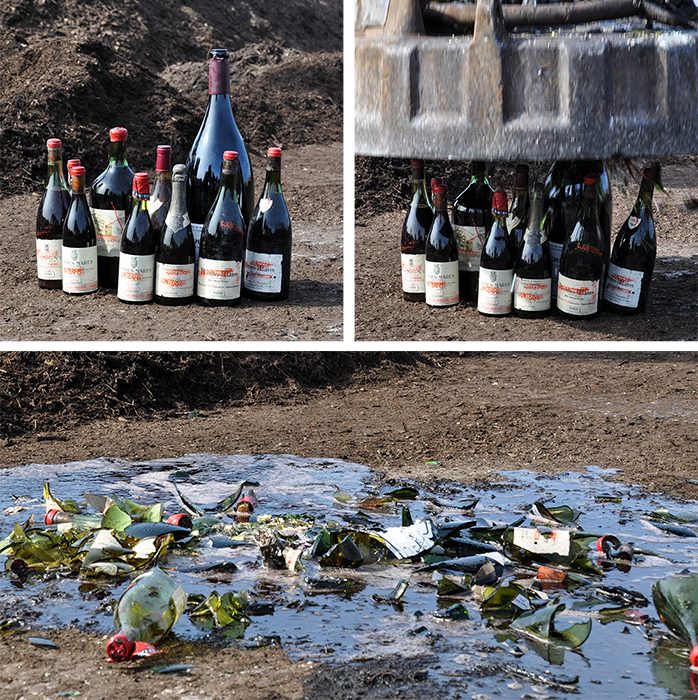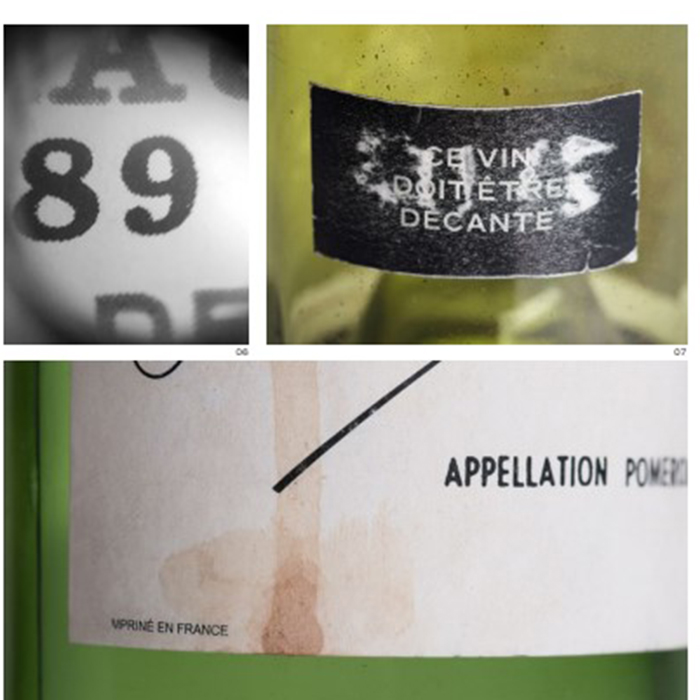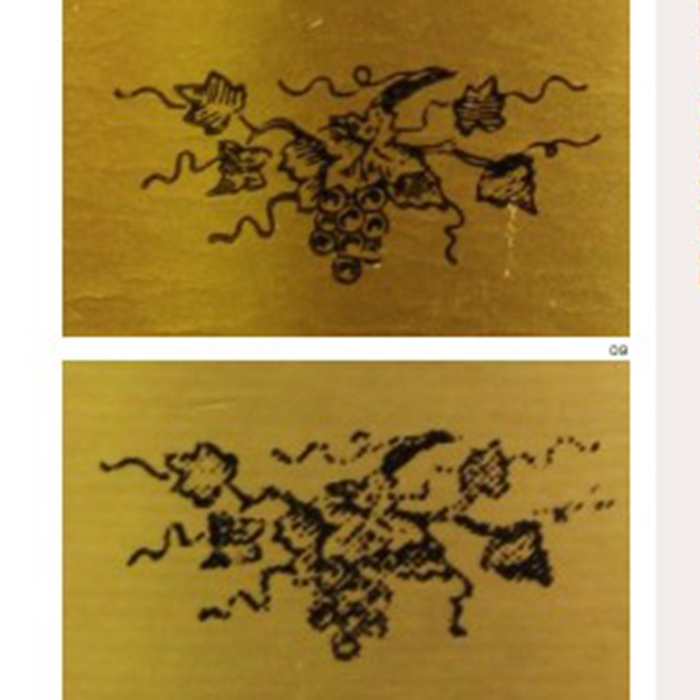Faking it part II: tell-tale signs
Author: Philip Moulin

Authentic age
Does it look and feel as old as it says it is? Is there a consistent amount of “wear and tear” to every element? There should be parity in age from the case to the capsule and label. The back label pictured below is standard for high-value wines sold by certain merchants. It looks slightly worn and scuffed from being put in and taken out of a wine rack; however, the label is entirely smooth to the touch and is almost certainly a photocopy of an original.
It’s all in the detail
Did the producer make wine in that vintage? Did the AOC on the label exist then? Is everything right on the label? Is all the information there? Compare a suspect bottle to a known genuine example if possible, to confirm the details on the label are right. If it were real, the label pictured here would read “IMPRIMÉ” not “MPRINÉ”.

A lot of bottle
How much does the bottle weigh? High-quality wines are rarely bottled in cheap glass, and tend to have a heft about them. Are the markings on the bottle right? Does it have, for example, the right marking in the punt? Modern vintages tend to have a lot number etched into the bottle, which will normally match a number on the case itself. Check to see if the etchings are there, and if the case matches the bottle.
Prime printing
Most wine labels use a print press: the shape is literally stamped into the paper and the indentation is filled with ink. The process creates a very clear line. Modern laser-printing is much cheaper, and effectively throws ink at the paper, producing a much less precise effect. You can see the difference between the real (first image below) and fake (the more grainy one beneath, and the number “89” above) examples pictured here.

Liquid lies
Is there too much wine in the bottle? Old wines will and should have lower fill levels, with the wine sitting “in the shoulders” of the bottle. If a 1945 Burgundy is filled right to the top, something is almost certainly awry. For heavier reds with several decades of bottle age, they should throw sediment; this can offer an extra clue.
The art of ultra-violet
Many high-value wines will use various types of holograms in the fabric of their label and capsule, which will only show up under ultra-violet light. They are hard to replicate cheaply, so shining an ultra-violet light on a wine can offer a quick guide as to the authenticity of the bottle in question.
To read the previous post on “faking it” click here.


